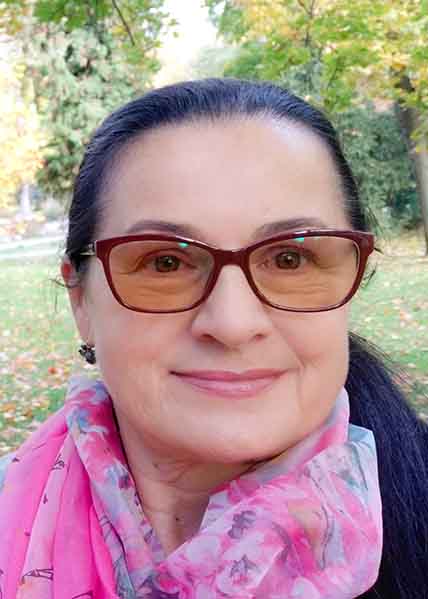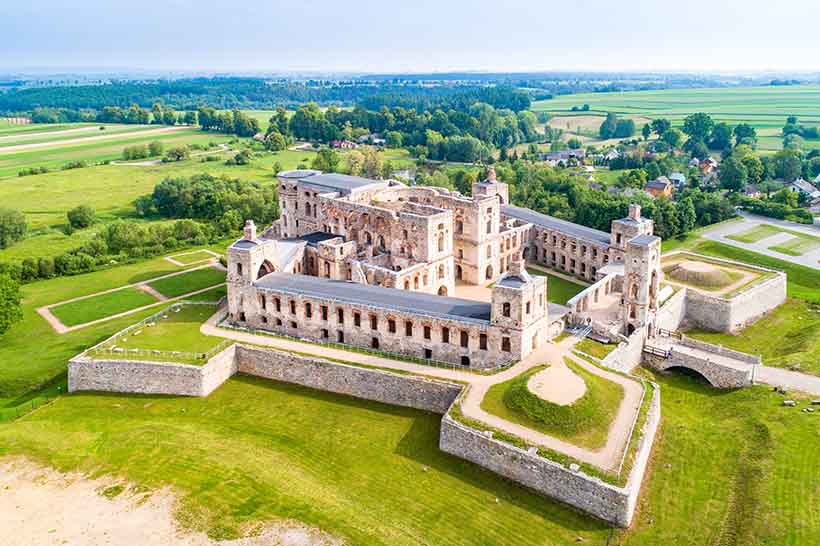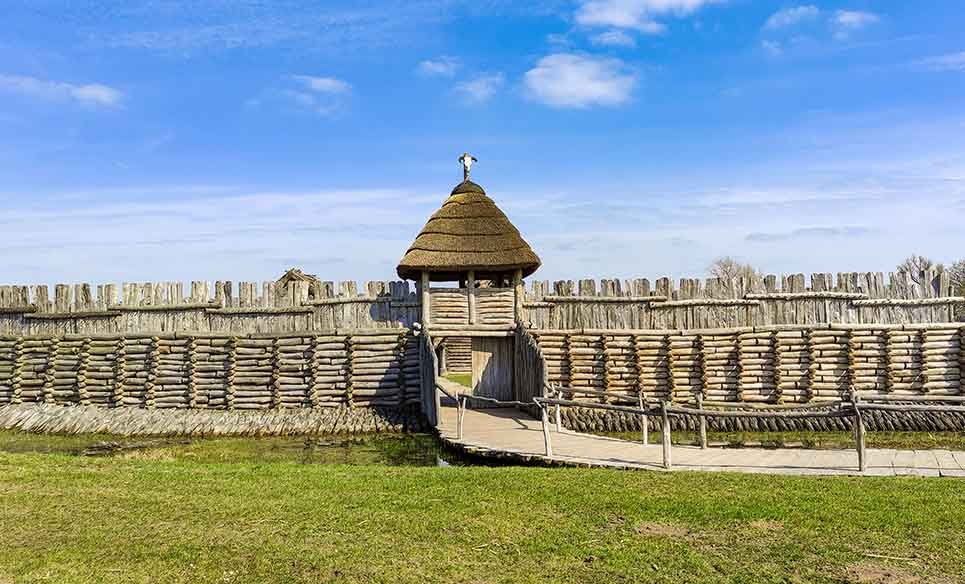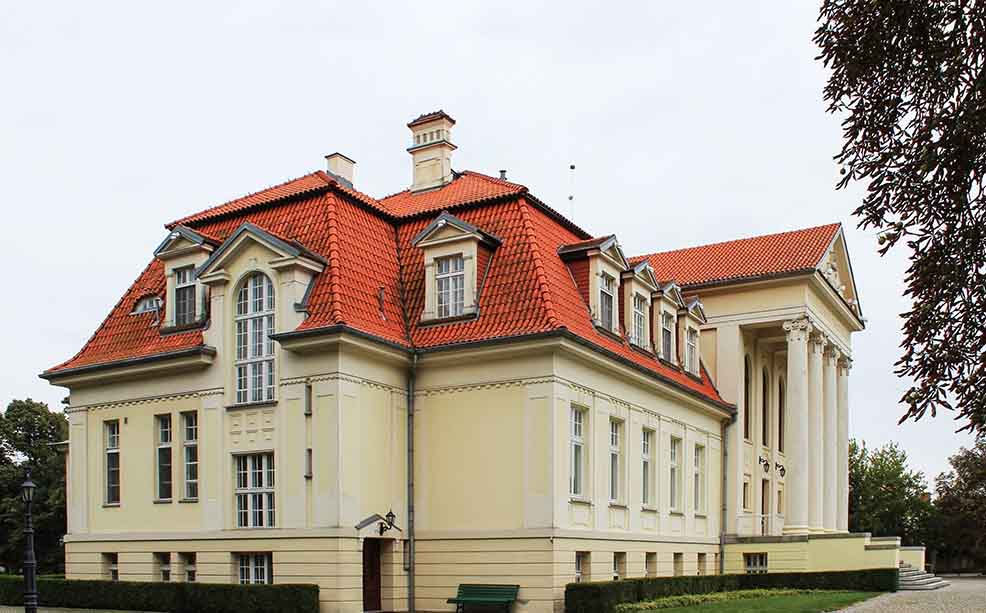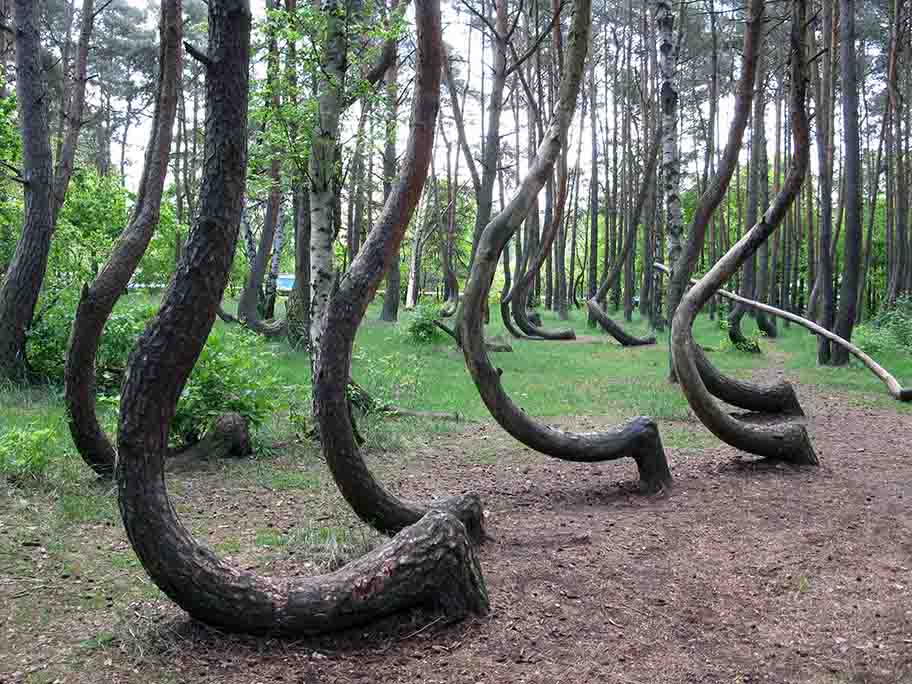Gołuchów Castle is an early Renaissance, multi-story brick castle, with towers in each corner, built in 1550-1560 on a square plan for Rafał Leszczyński, mayor of Radziejów and voivode of Brzeg-Kujawy, and used as a defensive stronghold and residence, thoroughly rebuilt in the mid-nineteenth century by Izabella Działyńska née Czartoryska. The castle is located in Gołuchów, Greater Poland (Wielkopolskie) Voivodeship, in Poland. [1]
History — The Beginnings of the Gołuchów Castle
We owe the over 450-year history of the castle in Gołuchów in Greater Poland to the Leszczyński family of the Wieniawa coat of arms (a black bison head inside a golden shield, with a golden circle in the nostrils), from which the king of Poland Stanisław Leszczyński (1677-1766) hailed, who — ironically — never stayed in Gołuchów. [1]
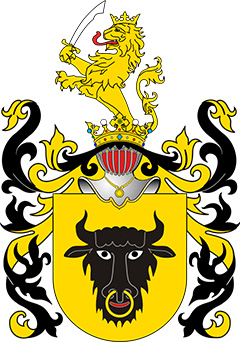
Wieniawa coat of arms of the Leszczyński family (Source: Wikipedia)
The current unique appearance was given to the building by Izabela Działyńska (1830-1899), who was the daughter of Adam Czartoryski and Anna née Sapieha, and grew up in the atmosphere of the Parisian Hôtel Lambert — the center of the Great Emigration after the November Uprising. Her husband Jan Kanty Działyński (1829-1880) received from his father Tytus Działyński the castle, that was falling into ruin, in Gołuchów around 1853, along with the goods surrounding the property.
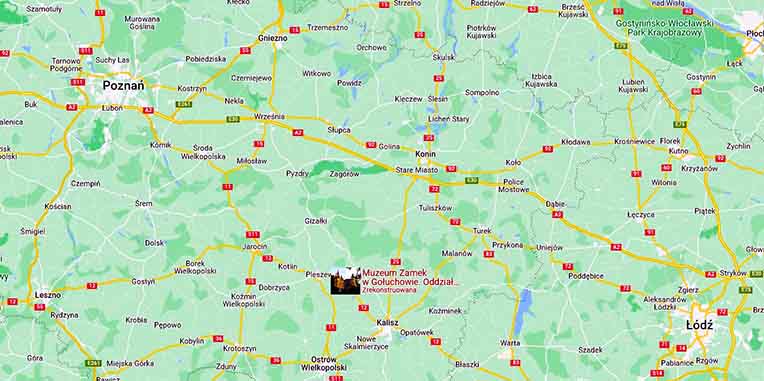
The location of Gołuchów (Source: Wikipedia)
Her infatuation with the French culture and art, with which Izabella had been associated since childhood, resulted in the reconstruction of the castle in the French Renaissance style by architects from the Loire (including Eugène Viollet-le-Duc, who restored the Notre-Dame cathedral in Paris). The interior design refers to the founders of the residence — the Leszczyński family, whose coats of arms appear in the form of a bull's head and the motif of the Leszczyński family's "L" topped with a crown. In the museum hall you can find a tondo with the coat of arms of France (three golden lilies on a blue background). A seasoned art collector decided to restore the glory of the forgotten castle and create a private museum in it, transferring to it the collections from Paris in 1875.

Castle in Gołuchów (Photo: PRSchreyner - Own work, CC BY-SA 3.0 pl, Wikipedia)
The family tradition of patronizing art was also followed by their ancestors and relatives. Izabella's grandmother, also Izabela Czartoryska, née Fleming, is the creator of the first Polish museum in the Temple of the Sybil in Puławy. Izabella's father-in-law, Tytus Działyński, is the founder of the Kórnik Library and the Museum in the Castle, rebuilt in the English Gothic style. And Izabella's brother, Władysław Czartoryski, is the creator of the Czartoryski Museum in Krakow, where the work of Leonardo da Vinci Lady with an Ermine is located.
The architecture of the historic building
The castle is an irregular, two-story building, on a rectangular plan with a residential attic, cellars and towers. It has five towers: three octagonal, one hexagonal and one quadrilateral. The fascinating building, consisting of the main body and two side wings, is built around a courtyard open to a vast terrace that was built on top of the basement of the old manor.
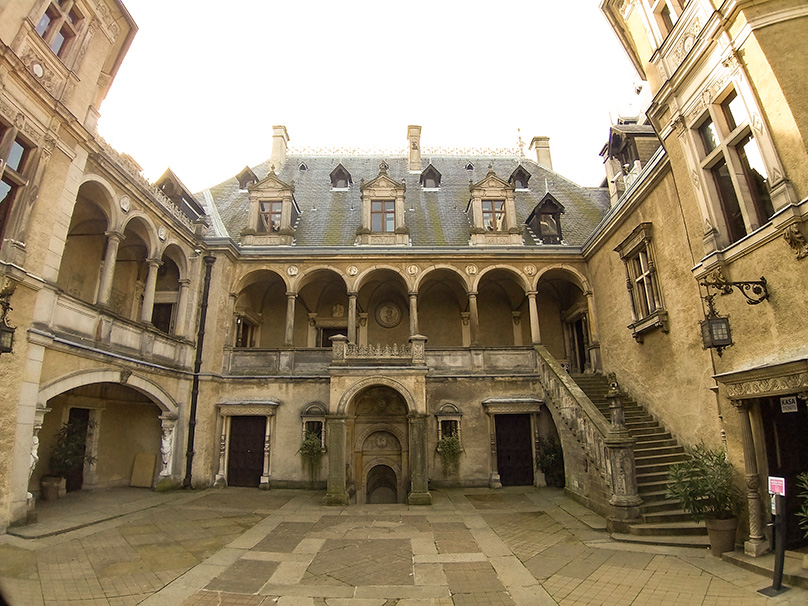
Castle's courtyard (photo by the author)
The courtyard is surrounded by arcaded cloisters with barrel-cross vaults and eleven beautiful door and window portals with columns and lintels, and a carved portal with an entrance to the underground. Architectural details made of sandstone decorate the fortress, built of brick and plastered. The castle is covered with hipped roofs with sumptuous dormers covered with slate, as are the towers.
Museum Interiors in the Castle
The entire castle complex, according to a well-thought design, was arranged by princess Izabella Działyńska into the living quarters and formal rooms representative of a typical magnate living in the Commonwealth in the Baroque period, and rooms with galleries, collections and archives acquired by the noble, are separated for the historical museum. The latter include collections of works of art and crafts from Poland and other European and world countries, brought by the duchess from private antique shops.
Currently, in the Gołuchów castle, there are magnificent halls on the following levels:
- Ground floor: Ancient Vases Room, Antiquities Room, Bedrooms, Gothic Rooms
- First floor: Old Polish Portrait Hall, Royal Hall, Table Hall, Sideboard, Library, Living Room
- Underground: Polish Hall, Museum Hall, Staircase and a little room in the tower
In each of the chambers there are unusual exhibits or elements of decor, often of great historical or artistic value. Stairs, ceilings, fireplaces, doors, paintings, portraits, sculptures, tapestries, furniture, beds, wainscot and woodcarving details draw attention. A portrait of the last king of Poland, Stanisław August Poniatowski, in a coronation garment, painted by Marcello Bacciarelli, was hung in the Table Room. In the center of the Hall of Ancient Vases, a hand-carved table of Baroque altar was placed, which for three months served as a catafalque, on which a coffin with the embalmed body of Izabella Działyńska was placed. The great staircase of the Castle made of oak wood, which is part of the staircase, is decorated with exquisitely carved balustrades and columns supporting the ribbed vault.

Princess Margaret's bedroom (photo by the author)
The Park-Arboretum
The castle in Gołuchów is located in an almost 160 hectares (395 acres) landscaped dendrological park, in which about 600 species of trees and shrubs have been preserved, stretching in the valley of the Ciemna river, and around two ponds. The impressive building is accompanied by numerous manors and administrative buildings, the Outbuilding and the Mausoleum. They house the Forest Culture Center with the Forestry Museum and the Carriage House, Owczarnia, Cowshed, Forge, Bee Nursery (Pasieka), Old Manor (Stary Dworek), and the Bear House. In their vicinity there is a House of Creative Work, and further, a Demonstration Farm.
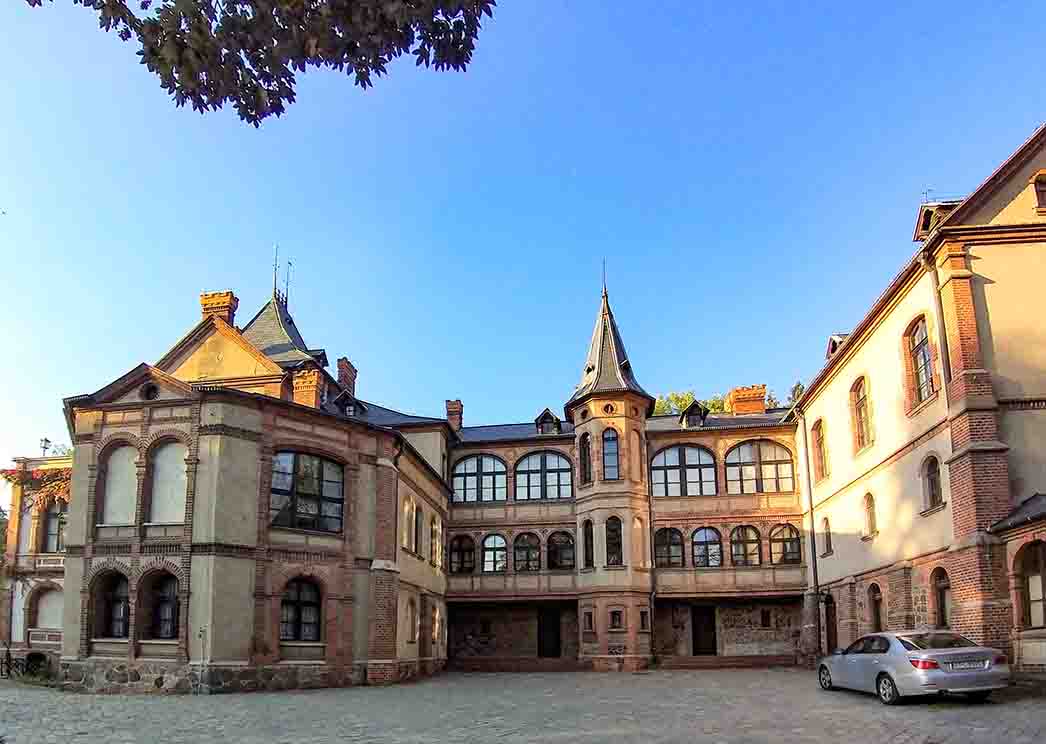
Oficyna/Outbuilding — Czartoryski Palace (photo by the author)
The Castle's Outbuilding (Oficyna) was rebuilt from the former distillery, having been adapted for residential purposes and being called the Czartoryski Palace. The building, in the French historicizing style, has a diverse three-story construction with the main body, tower and turret, and a glazed gallery to the south. Opposite the outbuilding there is the tomb chapel of St. John the Baptist, currently the Mausoleum, in which the founder, Izabella Działyńska, née Czartoryska, rests.
The History of the Fortress in the 20th Century
Thoughtful Duchess Izabella Działyńska established in 1893 the Ordinance of the Princes Czartoryski from Gołuchów, which ensured the indivisibility of the collection, universal accessibility, and funds for the maintenance of the museum. The independent museum facility operated for the common good until September 1939. During World War II, the castle was ravaged by the Germans, who robbed valuable collections of works of art and took them to the Third Reich (part of the looted collection was also found in the Soviet Union, "thanks to" the Red Army). The historic building was turned into a military clothing warehouse, which contributed to further devastation and allowed for further facility robberies.
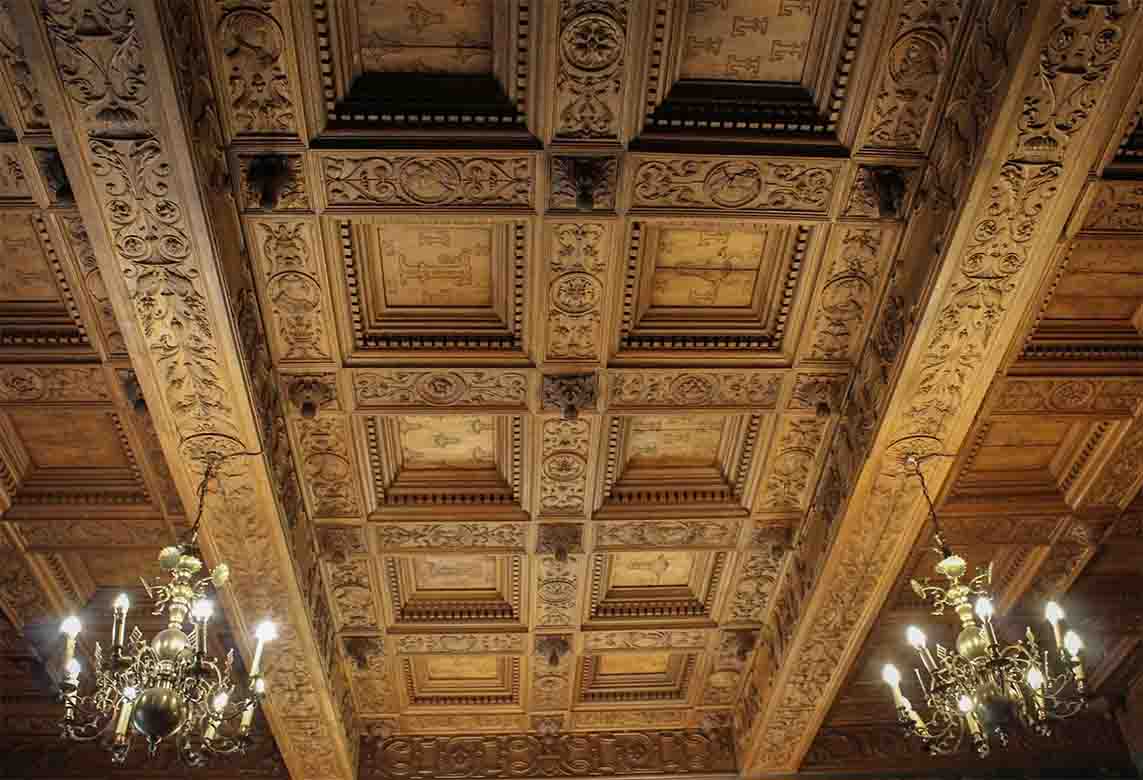
The ceiling in the Royal Bedroom (photo by the author)
In 1951, the National Museum in Poznań took over the building, carrying out the necessary renovation and conservation works, and with full commitment making efforts to restore the Gołuchów collections scattered around European museums. The most valuable collection of ancient vases, with 259 exhibits, returned to Poland in 1956. At present, 56 pieces of Greek vases are exhibited in Gołuchów. Works of art from the pre-war collection are slowly returning to their place in Gołuchów. Property issues were settled and the Castle has been owned by the State Treasury since 2017 (for EUR 20 million, USD 21 million).
The Collector's Passion of the Działyński Family
The Gołuchów collections built by Izabella Działyńska and her husband Jan Kanty were created thanks to cooperation with experts — art historians, antiquarians, archaeologists, artists and craftsmen. Izabella shared her passion for collecting with her husband, especially in the field of ancient works of art, after his return from exile, post the January Uprising of 1863. The collections gathered by the spouses included many pieces of fine art and artistic craftsmanship, comprising ancient, medieval and modern objects.
Among the most interesting types of exhibits are tapestries, military, goldsmithing, textiles, enamels, ceramics, glass, silver and embroidery. Due to their huge number, as well as their historical and artistic value, the collections had to be cataloged. Some of the original historic objects have been integrated into the walls of the building, creating specific decorative elements (window and door frames, architectural details made of stone, and even fireplaces).
Leszczyński, Czartoryski, Działyński Families
Many years of wandering along Polish routes led me once again to Wielkopolska — the historic land of Poland — whose name already appeared in documents from the 13th century. This time, I visited the region of the so-called Kaliskie, with the Castle in Gołuchów, and a dozen other towns with manors, palaces and castles in it. The Gołuchów fortress surprised me in many respects, provided an unforgettable experience, and allowed me to learn about the past of a monument whose history might as well be inscribed with golden letters as part of the history of the Republic of Poland. The Leszczyński family of the Wieniawa coat-of-arms, the Czartoryski of the Pogoń Litewska coat-of-arms, and the Działyński family of the Ogończyk coat-of-arms made great contributions to the Homeland by maintaining their national identity during the Prussian partition, by defending against Germanization, by helping regain independence, etc. Their important role cannot be overestimated,
NOTE: Due to the commencement of renovation works related to the replacement and renovation of doors and windows, the Castle Museum in Gołuchów is closed from Wednesday, May 4 until the end of 2022! [2]



